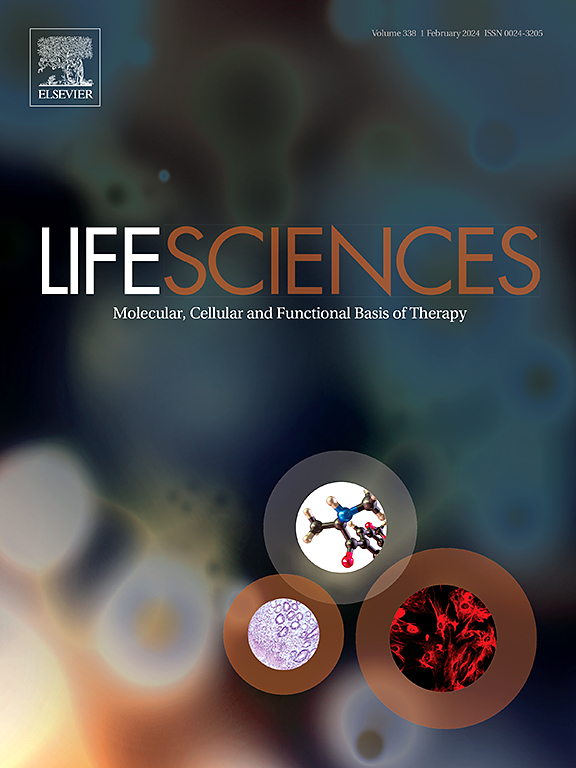Gender disparities in myotonic dystrophy 1
IF 5.2
2区 医学
Q1 MEDICINE, RESEARCH & EXPERIMENTAL
引用次数: 0
Abstract
Myotonic Dystrophy Type 1 (DM1) is a complex, inherited disorder characterized by significant clinical heterogeneity, affecting multiple organ systems with varying severity and age of onset. It is a multisystemic disorder with a wide range of clinical presentations that lead to symptoms and complications associated with various body systems. Predicting the overall phenotype and prognosis is challenging due to the lack of a single determining factor, complicating medical management and clinical trials. While extensive research has explored the genetic and molecular mechanisms of DM1, the influence of gender on disease manifestations, progression, and outcomes remains elusive. Emerging evidence suggests that male patients often experience greater morbidity and mortality with severe muscular, cardiac, central nervous system, and respiratory impairments, while females are more prone to ophthalmological, gastrointestinal, and endocrine complications. Potential gender-based differences in inheritance patterns also require further investigation. Despite these disparities, gender-specific considerations are largely absent in clinical management and research, limiting the development of targeted therapeutic strategies. This review provides a comprehensive analysis of gender-related differences in DM1, emphasizing their implications for disease prognosis, diagnosis, and treatment. Recognizing gender as a crucial factor in DM1 research and clinical practice could improve patient outcomes and more personalized therapeutic approaches.

强直性肌营养不良症的性别差异
1型肌强直性营养不良(DM1)是一种复杂的遗传性疾病,具有显著的临床异质性,影响多器官系统,其严重程度和发病年龄各不相同。它是一种多系统疾病,具有广泛的临床表现,可导致与各种身体系统相关的症状和并发症。由于缺乏单一的决定因素,使医疗管理和临床试验复杂化,预测整体表型和预后具有挑战性。虽然广泛的研究已经探索了DM1的遗传和分子机制,但性别对疾病表现、进展和结果的影响仍然难以捉摸。新出现的证据表明,男性患者通常有更高的发病率和死亡率,伴有严重的肌肉、心脏、中枢神经系统和呼吸系统损伤,而女性更容易出现眼科、胃肠道和内分泌并发症。遗传模式中潜在的基于性别的差异也需要进一步调查。尽管存在这些差异,但在临床管理和研究中基本上缺乏针对性别的考虑,限制了有针对性的治疗策略的发展。这篇综述提供了DM1的性别相关差异的综合分析,强调其对疾病预后、诊断和治疗的影响。认识到性别是DM1研究和临床实践中的关键因素,可以改善患者的治疗效果,并提供更个性化的治疗方法。
本文章由计算机程序翻译,如有差异,请以英文原文为准。
求助全文
约1分钟内获得全文
求助全文
来源期刊

Life sciences
医学-药学
CiteScore
12.20
自引率
1.60%
发文量
841
审稿时长
6 months
期刊介绍:
Life Sciences is an international journal publishing articles that emphasize the molecular, cellular, and functional basis of therapy. The journal emphasizes the understanding of mechanism that is relevant to all aspects of human disease and translation to patients. All articles are rigorously reviewed.
The Journal favors publication of full-length papers where modern scientific technologies are used to explain molecular, cellular and physiological mechanisms. Articles that merely report observations are rarely accepted. Recommendations from the Declaration of Helsinki or NIH guidelines for care and use of laboratory animals must be adhered to. Articles should be written at a level accessible to readers who are non-specialists in the topic of the article themselves, but who are interested in the research. The Journal welcomes reviews on topics of wide interest to investigators in the life sciences. We particularly encourage submission of brief, focused reviews containing high-quality artwork and require the use of mechanistic summary diagrams.
 求助内容:
求助内容: 应助结果提醒方式:
应助结果提醒方式:


